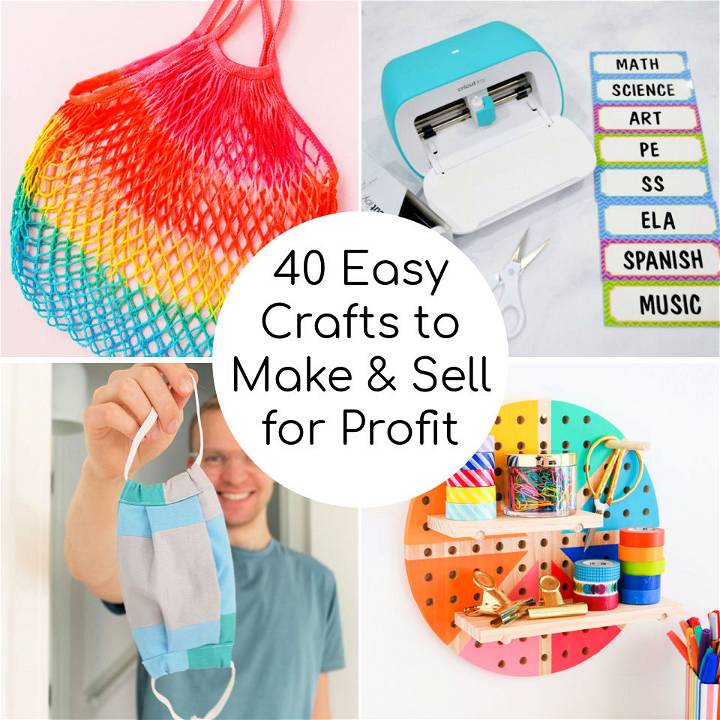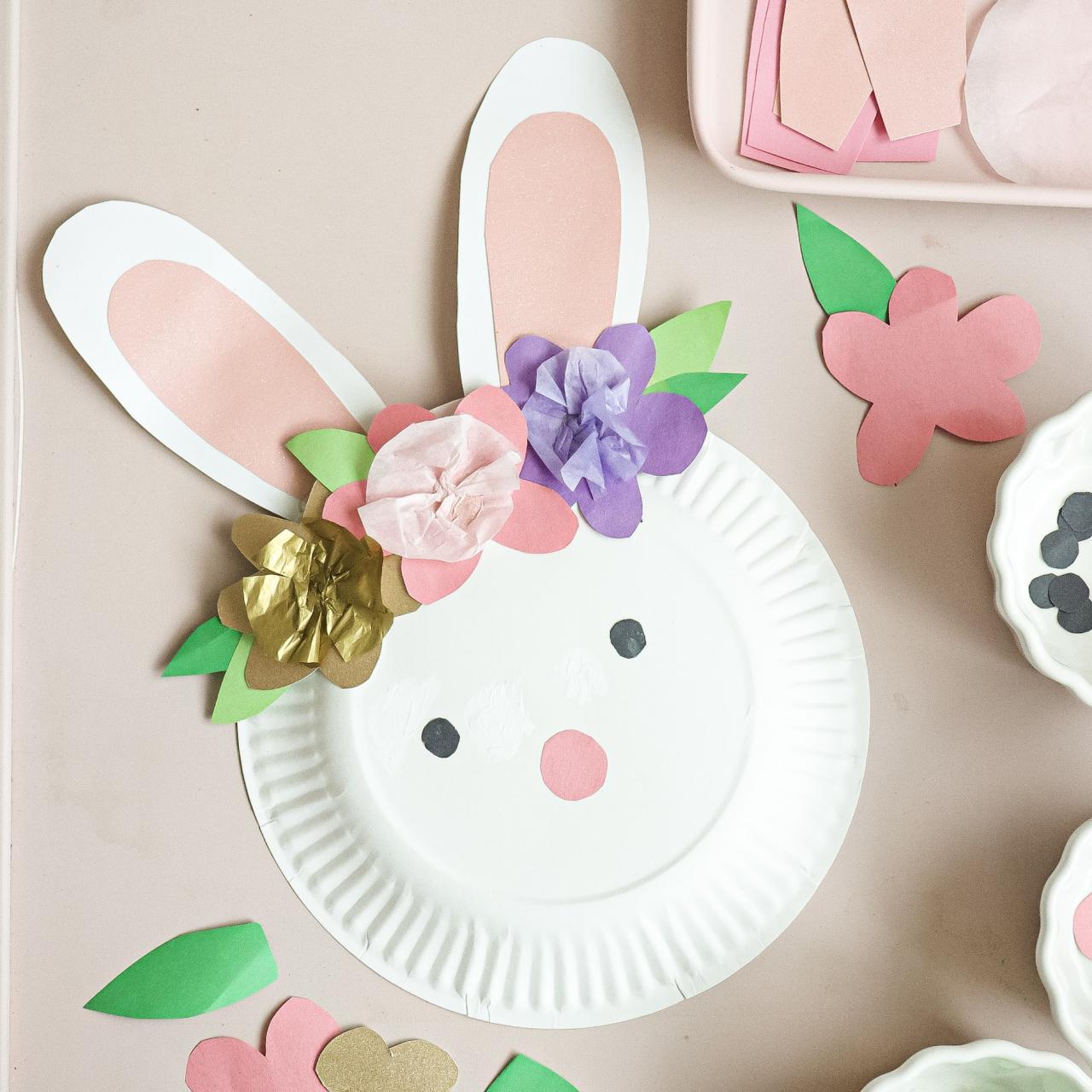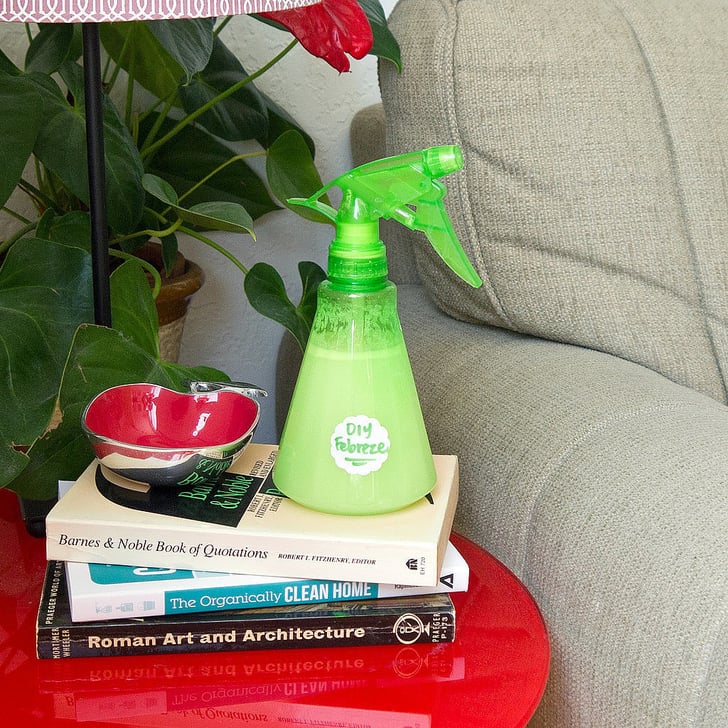DIY crafts to sell offer a unique opportunity to turn your passion into profit. Whether you’re a seasoned crafter or just starting out, the world of handmade goods is brimming with possibilities. From trendy jewelry to personalized home decor, the demand for unique and handcrafted items is on the rise. This guide will equip you with the knowledge and tools to navigate the exciting world of DIY crafting and establish a successful business.
We’ll delve into the essential aspects of starting a DIY craft business, from conducting market research and identifying profitable craft ideas to mastering crafting techniques, sourcing materials, and pricing your creations. You’ll learn about effective marketing strategies, professional product photography, and legal considerations. This comprehensive guide will provide you with a roadmap to success in the world of DIY crafts.
Market Research and Trends
Understanding the current market landscape is crucial for success in the DIY craft world. By researching popular crafts, analyzing successful sellers, and identifying emerging trends, you can position yourself for optimal growth.
Popular DIY Crafts
Popular DIY crafts change with time, influenced by current trends, seasons, and cultural shifts. To find popular crafts, browse online marketplaces, social media platforms, and craft blogs.
- Personalized items: Custom-made jewelry, engraved gifts, and personalized home decor items are consistently popular due to their unique and sentimental value.
- Home decor: Macrame wall hangings, terrariums, candles, and handmade pottery are in high demand as people seek to personalize their living spaces.
- Upcycled crafts: Repurposing old items into new creations is both eco-friendly and trendy. This includes turning old furniture into decorative pieces, creating jewelry from recycled materials, and transforming old clothing into unique accessories.
- Seasonal crafts: Crafts that align with specific seasons or holidays often experience a surge in popularity. For example, Christmas ornaments, Halloween decorations, and spring wreaths are popular during their respective seasons.
Analyzing Successful DIY Craft Sellers
Online marketplaces like Etsy, Amazon Handmade, and Shopify provide valuable insights into successful DIY craft sellers.
- Product categories: Identify the most popular product categories within these marketplaces. This will give you an idea of what sells well and what customers are searching for.
- Pricing strategies: Analyze the pricing of successful sellers in your niche. This will help you determine a competitive pricing strategy for your own products.
- Marketing strategies: Observe how successful sellers promote their products. This could include using high-quality photos, engaging product descriptions, and effective social media marketing.
- Customer reviews: Read customer reviews to understand what customers like and dislike about the products offered by successful sellers.
Emerging Trends and Popular Materials
Staying ahead of emerging trends is crucial for success in the DIY craft market.
- Sustainable materials: There’s a growing demand for eco-friendly and sustainable materials like recycled paper, natural fibers, and upcycled materials.
- Minimalist aesthetics: Clean lines, simple designs, and neutral colors are popular in home decor and fashion.
- DIY kits: Pre-packaged kits that provide all the necessary materials and instructions for specific projects are becoming increasingly popular.
- Personalized experiences: Offering customized workshops or classes related to your craft can attract customers seeking unique experiences.
Target Audience for Specific DIY Crafts
Understanding your target audience is essential for marketing your products effectively.
- Demographics: Consider the age, gender, location, and income level of your target audience.
- Interests: What are the hobbies, passions, and lifestyle choices of your target audience?
- Values: What are the values and beliefs that your target audience holds?
- Needs and desires: What are the needs and desires of your target audience?
Material Sourcing and Cost Management
Sourcing high-quality crafting materials at competitive prices is crucial for your DIY business’s success. This section will guide you through reliable sources, cost-saving strategies, and supplier comparisons to maximize your profit margins.
Identifying Reliable Sources for High-Quality Crafting Materials
Finding reliable suppliers for crafting materials is essential for ensuring consistent quality and timely delivery. Here are some trusted sources:
- Wholesale Craft Supply Stores: These stores offer bulk discounts and a wide range of materials, ideal for large-scale projects. Examples include Michaels, Hobby Lobby, and Jo-Ann Fabrics.
- Online Marketplaces: Platforms like Amazon, Etsy, and Alibaba offer a vast selection of materials from various suppliers. This allows you to compare prices and find specialized items.
- Local Craft Stores: Smaller, local craft stores often carry unique and high-quality materials, supporting local businesses and offering personalized service.
- Direct from Manufacturers: Contacting manufacturers directly can provide access to bulk discounts and customized options, especially for large orders.
Strategies for Minimizing Material Costs and Maximizing Profit
Minimizing material costs without compromising quality is crucial for maximizing your profit margin. Here are effective strategies:
- Negotiate Discounts: Contact suppliers and inquire about discounts for bulk purchases or long-term partnerships.
- Explore Alternative Materials: Research and experiment with alternative materials that offer similar quality at lower costs. For example, using acrylic paints instead of oil paints for certain projects.
- Reduce Waste: Implement efficient cutting and storage techniques to minimize material waste.
- Utilize Recycled Materials: Incorporate recycled materials like cardboard, fabric scraps, or upcycled items into your crafts, reducing costs and promoting sustainability.
Comparing Suppliers and Their Pricing
Before committing to a supplier, compare their prices and offerings. Consider factors like:
- Material Quality: Ensure the materials meet your quality standards and are suitable for your projects.
- Pricing: Compare prices for similar materials across different suppliers, considering shipping costs and minimum order quantities.
- Shipping Costs and Delivery Time: Factor in shipping costs and estimated delivery time to ensure timely arrival and avoid delays.
- Customer Service: Consider the supplier’s reputation for customer service, responsiveness, and willingness to address concerns.
“Always strive for the best quality materials within your budget, as this directly impacts the final product and customer satisfaction.”
Photography and Presentation: Diy Crafts To Sell
High-quality product photography is crucial for showcasing your DIY crafts and attracting potential buyers. Appealing visuals create a strong first impression and influence purchasing decisions.
Importance of Professional and Appealing Product Images
Professional and appealing product images are essential for creating a positive brand image and increasing sales. High-quality photos make your crafts look more desirable and trustworthy. They also help customers visualize the products in their own homes and inspire them to make a purchase.
Tips for Capturing High-Quality Photographs of DIY Crafts
- Use Natural Light: Natural light is the best source of illumination for product photography. Position your crafts near a window, but avoid direct sunlight, which can create harsh shadows.
- Choose a Simple Background: A plain background helps to focus attention on your crafts. Consider using a white backdrop, a textured fabric, or a solid-colored wall.
- Use a Tripod: A tripod ensures that your camera remains steady, resulting in sharp and clear images.
- Compose Your Shots Carefully: Pay attention to the composition of your photos. Use the rule of thirds, where you divide the image into nine equal sections and place your subject at the intersection of the lines.
- Edit Your Photos: Basic editing, such as adjusting brightness, contrast, and color balance, can enhance the appearance of your photos.
Effective Product Photography Techniques
- Flat Lay Photography: This technique involves arranging your crafts on a flat surface and photographing them from directly above. Flat lay photography is ideal for showcasing small items, such as jewelry, candles, or soaps.
- Lifestyle Photography: Lifestyle photography captures your crafts in a real-life setting. For example, you could photograph a knitted blanket draped over a chair or a handmade candle burning on a coffee table.
- Close-Up Photography: Close-up photos allow you to highlight the details and textures of your crafts. They are particularly effective for showcasing intricate designs or unique materials.
Legal Considerations
Selling your DIY crafts online and at events requires navigating various legal considerations to ensure you’re operating within the law and protecting yourself from potential issues. Understanding copyright, trademark, and liability concerns, along with obtaining necessary permits and licenses, is crucial for a smooth and successful business journey.
Copyright and Trademark
Copyright and trademark laws protect the intellectual property of creators and businesses. Understanding these laws is vital for avoiding legal issues and ensuring your business operates ethically.
- Copyright: This protects original works of authorship, including literary, dramatic, musical, and certain other intellectual works. When you create a unique design or pattern for your crafts, it’s automatically copyrighted to you. However, you can’t use someone else’s copyrighted work without permission. This includes images, designs, patterns, and even song lyrics used in your craft projects.
- Trademark: This protects brand names, logos, and other distinctive marks used to identify goods or services. If you’re using a specific brand name or logo for your business, it’s crucial to ensure it’s not already trademarked by someone else. Additionally, avoid using any trademarks owned by others without permission.
Liability, Diy crafts to sell
Liability refers to legal responsibility for harm or damage caused to others. As a craftsperson, you need to consider potential liability issues that could arise from your products.
- Product Liability: If your crafts cause harm to someone due to a design flaw, faulty materials, or inadequate instructions, you could be held liable. This highlights the importance of using high-quality materials, providing clear instructions, and ensuring your products are safe for their intended use.
- Insurance: Consider obtaining product liability insurance to protect yourself financially in case of any claims. This policy can help cover legal fees and settlements if someone is injured by your products.
Permits and Licenses
Depending on your location and the nature of your craft business, you may need to obtain specific permits and licenses to operate legally.
- Business License: This is generally required for any business operating in a specific location. Contact your local government or business licensing authority for details on the necessary permits and licenses.
- Sales Tax Permit: If you’re selling your crafts in a state that requires sales tax, you’ll need a sales tax permit to collect and remit taxes on your sales. Research your state’s specific requirements for sales tax registration.
- Other Permits: Depending on your specific craft and business activities, you might need additional permits, such as a food handler’s permit for edible crafts or a zoning permit for operating a workshop from home.
Resources for Legal Information
Several resources can help you navigate the legal aspects of your craft business.
- Small Business Administration (SBA): The SBA provides comprehensive resources and guidance for small businesses, including legal information. Visit their website or contact a local SBA office for assistance.
- Legal Aid Organizations: Non-profit legal aid organizations often offer free or low-cost legal advice to small businesses. Search for local legal aid organizations in your area.
- Attorneys: Consulting with a business attorney can provide tailored legal advice and ensure you’re complying with all relevant regulations.
Building a Brand and Identity

A strong brand identity is essential for any DIY craft business, as it helps you stand out from the competition and attract your target audience. This involves creating a unique brand name, logo, and visual style that reflects your personality and values.
The Importance of a Consistent Brand Message and Visual Style
A consistent brand message and visual style are crucial for building brand recognition and trust. This means using the same colors, fonts, and imagery across all your marketing materials, including your website, social media, and packaging.
- Website: Your website should be visually appealing and easy to navigate, with clear information about your products and services.
- Social Media: Use high-quality images and videos to showcase your products and engage with your audience.
- Packaging: Your packaging should be eye-catching and reflect your brand identity.
Examples of Successful Brands in the DIY Craft Industry
- Etsy: Etsy has built a strong brand identity around handcrafted goods and creativity. Their website and marketing materials feature a rustic, vintage aesthetic that appeals to their target audience.
- Martha Stewart: Martha Stewart has built a successful brand around homemaking and DIY crafts. Her brand identity is characterized by her elegant and classic style, which is reflected in her products, website, and social media.
- The Home Edit: The Home Edit has built a successful brand around organizing and home décor. Their brand identity is characterized by their bright and colorful style, which is reflected in their products, website, and social media.
Customer Service and Reviews
Excellent customer service is paramount for any DIY craft business. It builds trust, loyalty, and positive word-of-mouth, ultimately contributing to your success. Responding promptly and professionally to customer inquiries, addressing issues effectively, and fostering a positive customer experience are crucial.
Responding to Customer Inquiries and Resolving Issues
Responding to customer inquiries and resolving issues promptly and effectively is essential for building trust and loyalty.
- Acknowledge and Respond Quickly: Aim to respond to inquiries within 24 hours, if not sooner. A timely response shows that you value your customers and are attentive to their needs.
- Be Professional and Courteous: Maintain a professional and respectful tone in all communications, even when dealing with challenging situations.
- Offer Solutions: If a customer has a problem, work diligently to find a solution that satisfies them. This might involve offering a replacement, refund, or a discount on their next purchase.
- Go the Extra Mile: Sometimes, exceeding customer expectations can make a significant difference. A handwritten thank-you note or a small gift can go a long way in building goodwill.
Encouraging Positive Customer Reviews and Feedback
Positive customer reviews and feedback are invaluable for any business, especially for a DIY craft business. They can help attract new customers and build trust in your brand.
- Make it Easy for Customers to Leave Reviews: Include clear instructions and links to your review platforms on your website, social media pages, and product packaging.
- Request Reviews from Satisfied Customers: After a successful sale, politely ask your customers to leave a review. You can send a follow-up email or include a card with your packaging.
- Respond to All Reviews: Respond to both positive and negative reviews. Thank customers for their positive feedback and address concerns raised in negative reviews professionally and constructively.
- Offer Incentives: Consider offering small incentives for leaving reviews, such as a discount on their next purchase or entry into a giveaway.
Ending Remarks
The journey of transforming your creative passion into a thriving DIY craft business is both rewarding and fulfilling. By combining your crafting skills with a strategic approach to marketing, pricing, and customer service, you can create a successful and sustainable business. Remember, continuous learning and adapting to trends are key to staying ahead of the curve. Embrace the creative process, experiment with new ideas, and most importantly, have fun along the way!
DIY crafts to sell are a great way to earn extra income and express your creativity. One popular category for fall is DIY fall decor , which includes everything from festive wreaths to charming table centerpieces. Consider tapping into this seasonal trend to expand your craft offerings and attract buyers looking for unique and affordable autumn decorations.




